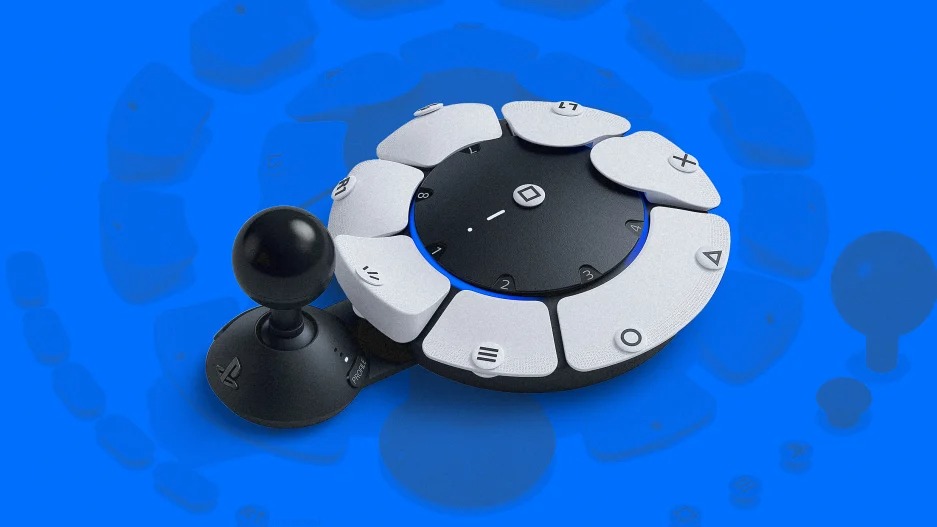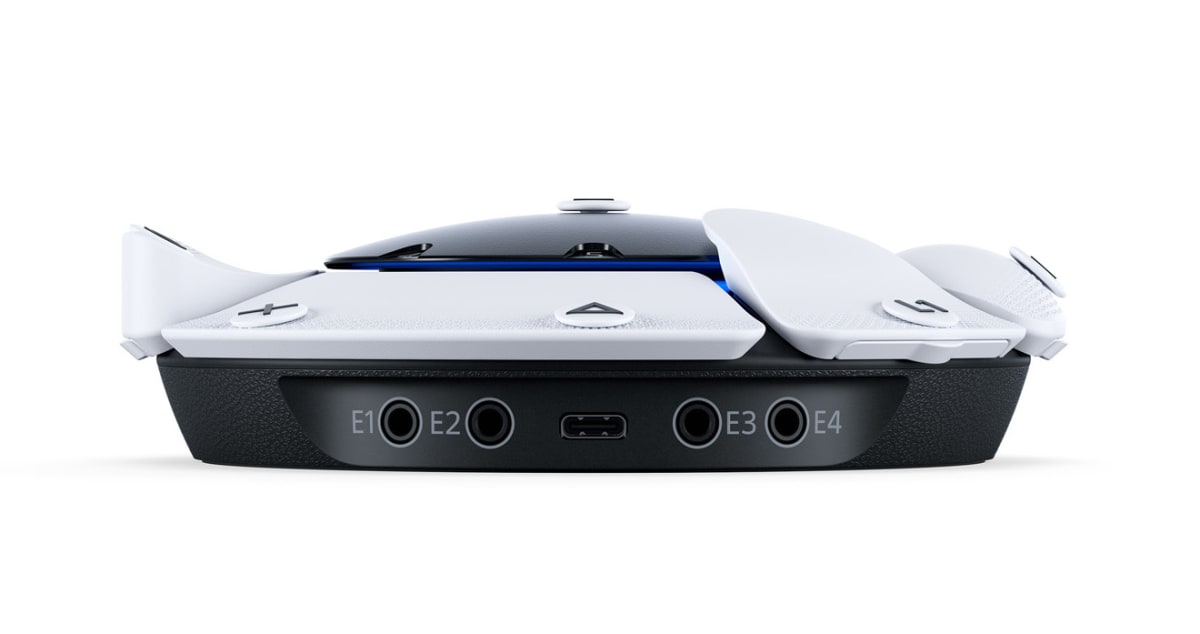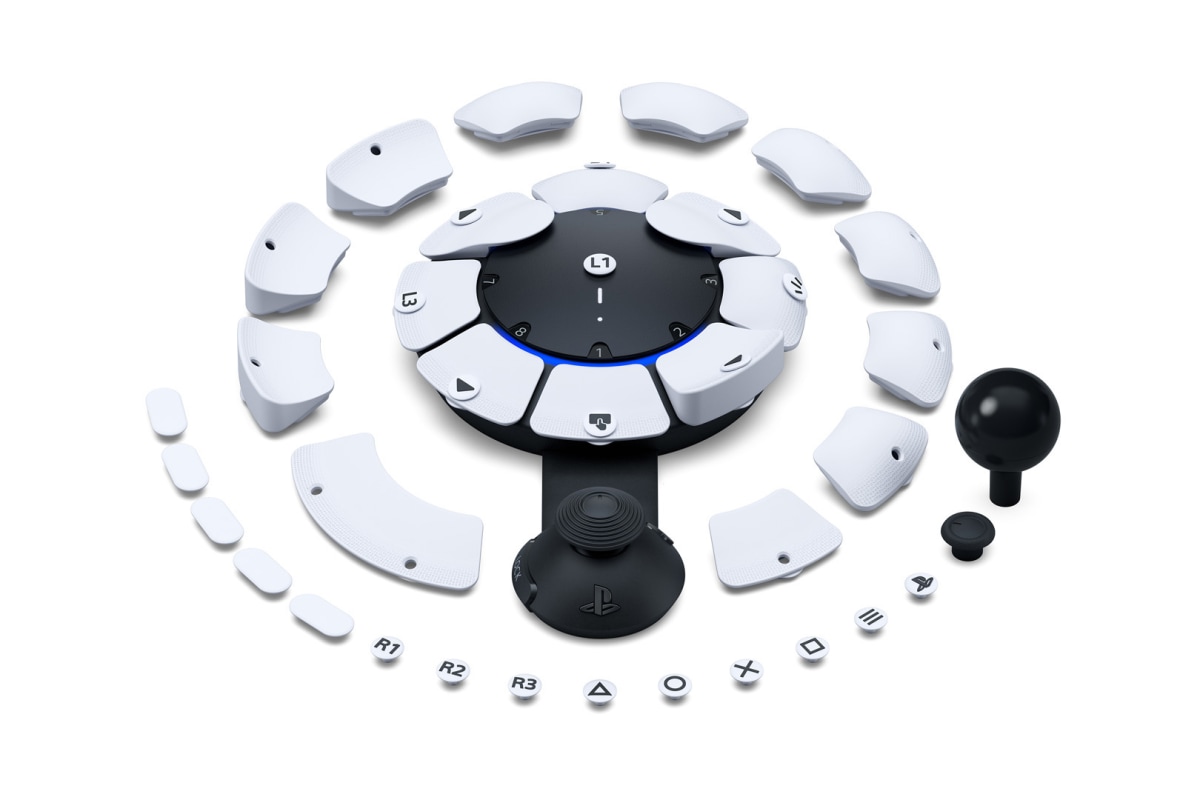- | 8:00 am
Sony’s new Access controller for PS5 is almost (but not quite) a breakthrough design
Sony’s new Access controller is a step forward in making gaming more accessible for people with disabilities. But it comes with a few drawbacks.

Sony PlayStation’s highly anticipated Access controller is finally available for purchase this week (starting Dec. 6). The adaptive gaming controller, formerly known as Project Leonardo, made a splash when it debuted at CES back in January, after nearly five years in development. Designed to remove barriers for gamers with disabilities, the Access controller’s design is a radical departure from the standard DualSense controller that comes standard with the PS5—and from other accessible controllers in the console space.
Sony gave me the opportunity to test out the Access controller last week, and as a wheelchair user who lives with Muscular Dystrophy, I was particularly excited to try out a device that could potentially facilitate an easier gaming experience. While there are a lot of components within the design that make it more accessible than a DualSense controller, there are also several drawbacks, if not missteps, that might be deal breakers for some players.

Let’s start with how the Access controller functions, and what the design gets right. The Access controller is essentially a versatile kit of parts that allows players to customize their gaming setup based on their unique access needs. The controller is round, lightweight, and compact, like an oversize wireless mouse that can be placed on any flat surface, eliminating the need to hold or grip the controller like the DualSense requires.

The kit comes with two customizable control sticks and a variety of low resistance buttons held in place by magnets that can be removed, rearranged, or mixed and matched depending on what feels most comfortable. The buttons are also large and sturdy enough for players to press with their fingers, palms, knuckles, or even elbows, and are arranged radially on a single plane, which is useful for players with limited range of motion or dexterity, or for those who struggle to reach or press trigger buttons on the front of a standard controller. Players can further customize the controller by connecting additional buttons and trigger switches via the Access controller’s four 3.5mm expansion ports, and configure their inputs via their PS5 console settings.

The Access controller isn’t the only accessible gaming device on the market. The XBox Adaptive Controller and the Hori Flex Controller for Nintendo Switch have both been around for a few years, but they take a different approach to creating an accessible gaming setup. They both serve as hubs that players can customize by connecting third party buttons and switches. The Access controller, on the other hand, positions itself as a plug and play option that doesn’t necessarily require additional hardware to get started playing.

One of the Access controller’s strengths is the amount of flexibility the design affords. In addition to the range of interchangeable button styles and shapes, the control sticks can be extended, shortened, and locked to a specific length and can be played from any 360° orientation. You can map button inputs, so the commands you need are exactly where you want them; you can toggle commands on/off or to serve as a single-press input, or disable buttons altogether to stop accidental pressing. You can even map two commands to a single button for better ease of use. By prioritizing flexibility in the Access controller’s user experience, Alvin Daniel, senior technical program manager, says that their goal was to design a product that met the needs of a broad spectrum of abilities. “No two people experience disability in exactly the same way, so we wanted to give players choice and flexibility in how they can configure the Access controller to make it uniquely their own,” Daniel explains.
PlayStation partnered with organizations AbleGamers, SpecialEffect, and Stack Up to help the design and engineering team identify key accessibility challenges for gamers with disabilities. “We tested our prototypes on three continents, because we wanted as deep and wide and diverse a pool of players as possible,” Daniel says. “It was important to the team that the prototypes were made available to testers in their homes because we wanted to understand how it integrated with players’ existing gaming equipment or other assistive tech at home.” They also wanted to understand how a non-gamer might interact with the device, such as a care worker, because they would potentially be involved in the setup and configuration of the controller.

As a disabled journalist who regularly covers design and tech, I’m pretty skeptical about brands promising accessible innovations. More often than not, the final product hasn’t been designed in collaboration with disabled people, and is ultimately little more than a PR move to virtue signal that their brand is inclusive. This isn’t the case with the Access controller. Playstation worked with experts from the disability community throughout the development process and has taken a holistic approach to design by considering the user’s home environment and care team as well as the dynamic nature of some disabilities that change over time or even day to day. For some players, the Access controller will be an incredible new tool that will enable a more accessible gaming experience.
But despite the plethora of customizable options, extensive prototyping, and user research, some of the design decisions will still impose limitations onto players who don’t fit into a specific use case. For example, those who use a lot of external buttons and switches in their current setups may be restricted by the Access controller’s four inputs compared to the Xbox Adaptive controller, which has 19. The design decision I found to be the most frustrating was that the team chose to essentially chop the layout of a standard controller in half. Playstation touts this as an innovative solution that provides more flexibility for how players arrange the distance between the right and left buttons and joysticks; however, it leaves you with only one joystick and eight buttons to remap whereas a DualSense controller has 16 buttons and two joysticks.
While I was able to get away with using only one controller for some simple games, there weren’t enough inputs available for any game that required complex button combinations or the directional control of the right joystick to orient myself in space. This means players must use their Access controller in tandem with their DualSense controller or purchase an additional Access controller for $89.99, doubling the overall cost of their setup.
Statistically, people with disabilities earn less money than people without disabilities (those with a disability earned a median of $28,438 in 2021, compared with $40,948 among those without a disability, according to the Census Bureau), and I wish PlayStation had taken financial accessibility into consideration before releasing the Access controller as a single device and not a pair, the way the Nintendo Switch’s Joy-Con ships as a pair, or individually for half the price. Daniel said that during testing, about 40% of players actually preferred using the DualSense controller with a single Access controller, which leads me to wonder if creating a modified DualSense controller with reoriented trigger buttons might have been a better solution for a large number of users rather than completely reinventing the wheel.
I was also disappointed it didn’t have some of the new features on the DualSense like haptic feedback or a touchpad, and that a two-Access controller setup was only really usable at a table for me. When I game, I typically like to transfer out of my wheelchair and sit with my feet up on the couch or lay on my bed. For me personally, I found it cumbersome to switch back and forth between the two controllers when reclining, or really from any position that wasn’t seated upright at a table in my wheelchair.
The number of customizable options and lack of guidance in the configuration process could also feel overwhelming for less experienced gamers, or someone who’s just picking up a PS5 for the first time. There are a lot of buttons in the box, and unless you already know which games rely on which buttons, you’re going to spend a lot of time experimenting with different button map configurations for every new game you try. While I found this trial and error process to be a bit tedious, PlayStation does advise that it takes about a week to adapt to the new controller. Daniel also told me that they plan to continue to collaborate with the disabled gaming community, by releasing forthcoming videos featuring players sharing setups and configurations that work best for them to help reduce that initial learning curve for new users. “What’s exciting to me is that the Access controller is now part of the PlayStation family, and just like the DualSense controller, it will continue to evolve and improve over time,” Daniel says.
In its current iteration, the Access controller feels like less of a replacement for the DualSense and more of an augmentation to help enhance your accessible gaming experience. No assistive device will work for every person, and the Access controller is no exception, but it’s helping to move the gaming industry in the right direction, and serves as a good case study in what works and what doesn’t work when designing products for such a diverse demographic. It’s my hope that with ongoing user feedback following its release, PlayStation will continue to refine the design or expand their accessibility offerings to include new products that will better address the access needs of an even wider range of players within the disabled gaming community. Until then, A for effort.





































